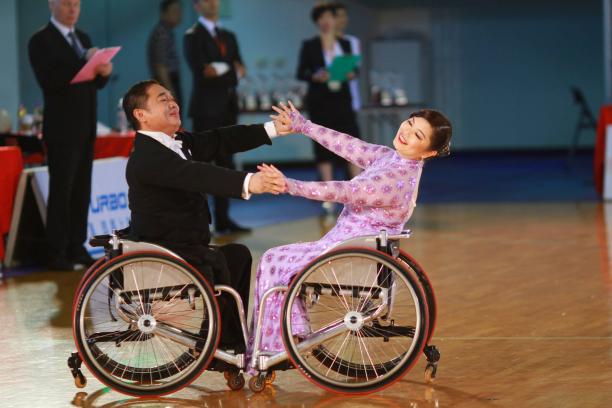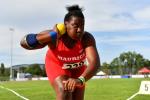Para-sport explained: Classification in wheelchair dance sport
01.08.2015To help understand classification, we take a closer look at how it works in wheelchair dance sport.
 The 2015 IPC Wheelchair Dance Sport New Taipei City Cup Open was held from 9-12 July.
© • IPC
The 2015 IPC Wheelchair Dance Sport New Taipei City Cup Open was held from 9-12 July.
© • IPC
What is classification?
In para-sport, athletes have an impairment that creates a disadvantage in their performances. To minimise that impact, classification is used. It determines who is eligible to compete in a para-sport and then groups them in sport classes based on their activity limitations in that sport.
The goal: create a fair, even playing field.
How does classification look in wheelchair dance sport?
Athletes with a physical impairment that affects their lower limbs are eligible to compete in wheelchair dance sport. (It is important to note that athletes need to have a medical diagnosis causing permanent impairment in the lower limbs compatible with the eligible criteria. The criteria can be found on page 33-35, appendix 1, in the classification rules and regulations).
However, their impairment (e.g. limb deficiency or impaired muscle power) can affect their ability to perform certain moves in a sport that looks at elegance and grace.
Thus, athletes are classified in two sport classes – LWD 1 and LWD 2 – according to how much their impairment impacts performance. This ensures the success of an athlete is determined by skill, fitness, power, endurance, tactical ability and mental focus.
How are wheelchair dancers assigned to sport classes?
Classifiers evaluate the athletes and assign them to either LWD 1 or LWD 2. They look at athletes’ control and functionality within their wheelchair, as well as core stability, giving them scores with a maximum of 20.
Athletes who score 14 or less are classified as LWD 1, and above are LWD 2.
Who assess the athletes?
Each sport has its own classifiers. For wheelchair dance sport, classifiers must be certified health professionals (e.g. physicians and physiotherapists).
What is the classification process like for an athlete?
Classification takes place before competitions. Therefore, athletes who need to be classified arrive at the competition a few days earlier. Depending on the impairment, an athlete might undergo classification several times throughout his or her career.
In wheelchair dance sport, two classifiers comprise the classification panel that will evaluate the athlete and determine which sport class the athlete should compete in.
What should athletes know when being classified?
The following are important for athletes to keep in mind:
•If they cannot understand and communicate in English, they need to bring an interpreter.
•Bring along their medical documentation in English or translated. Make sure the athlete’s National Paralympic Committee (NPC) has their medical information form and has uploaded it in the IPC Sport Data Management System.
•Attend in the wheelchair they will be competing in, with all strappings, adaptions, etc., in place and in use. If any of the strappings are incorporated into a costume, then the athlete will need to be wearing the costume for the classification process. As mentioned earlier, understanding eligibility is a key component of classification for the equality of athletes. Athletes should have a medical diagnosis directly causing permanent significant impairment of the lower limb(s) to be eligible for wheelchair dance sport.
During classification, they must:
•Comply with any questions asked by the classification panel.
•Comply with any and all requests made by the classification panel to the best of their ability.
More information on the eligibility criteria can be found on page 33-35, appendix 1, at the IPC WDS classification rules and regulations.
Will the classification system change?
A growing concern with the current classification system is the high degree of variation within a given sport class. For example, the ability of an athlete who scores 15 points and is classified in LWD2 may have a greater disadvantage than an athlete who scores 20 points and is in the same sport class.
It is in these growing concerns that the sport has undergone significant investigation and identified the integral role trunk function plays in a wheelchair dancer’s performance.
IPC WDS Head of Classification Owen Tsai said the federation has been working with the sport’s technique experts on revising the classification system to make it more sport-specific and comprehensive. For example, function of pelvis, head and neck will be assessed in the proposed new system. Combination movements will also be applied in the technical assessment. A variety of tests have been developed to assess the performance relevant to each specific dance.
Where can you find more information?





















